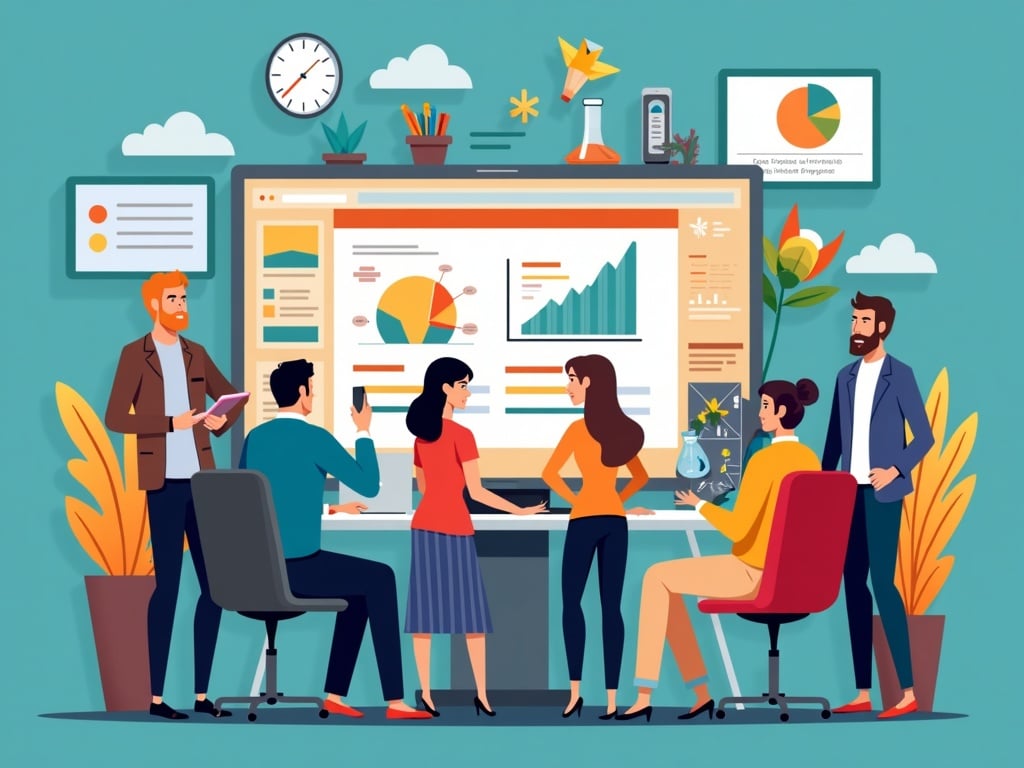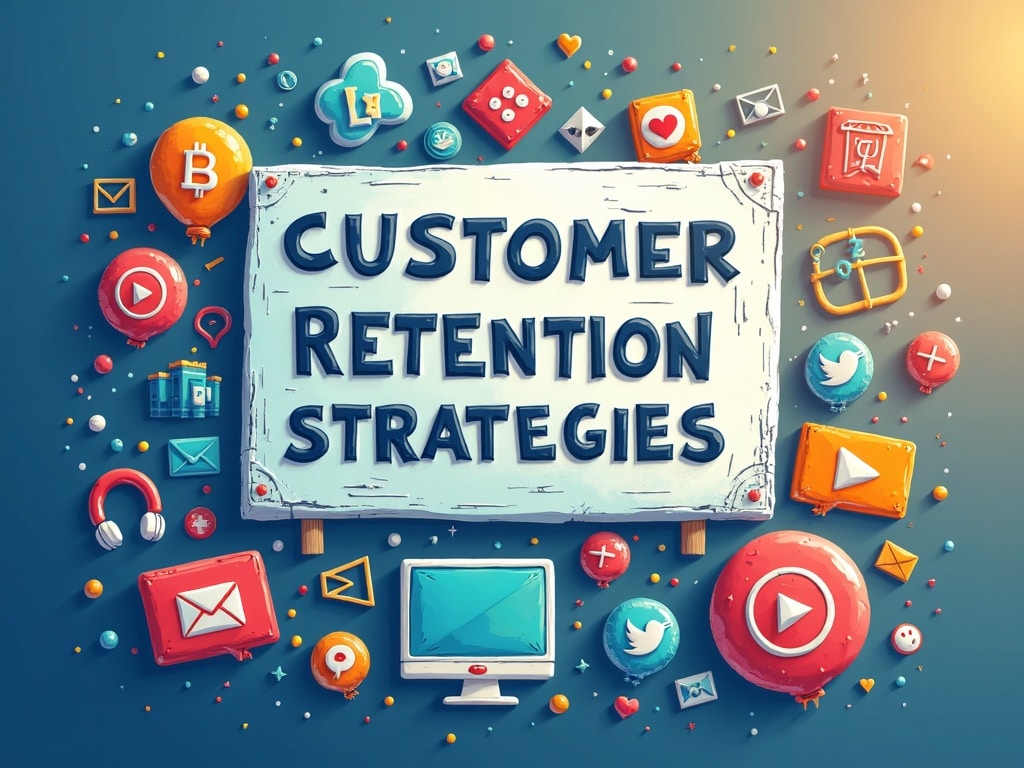Customer Retention Strategies: A Detailed Guide for Aspiring Entrepreneurs
What is Customer Retention? Why is it More Important Than Acquisition?
Imagine a leaky bucket. You keep pouring water in (new customers), but it steadily flows out through the holes (churned customers). Customer acquisition is essential, but without effective customer retention strategies, you're constantly expending resources to replace lost business. Customer retention refers to the activities and actions companies take to reduce the number of customer defections.
Why is retention more important? It's simply more cost-effective. Acquiring a new customer can cost five to twenty-five times more than retaining an existing one, according to Harvard Business Review. Loyal customers spend more, are more likely to try new products or services, and act as brand advocates, providing valuable word-of-mouth marketing.
Understanding Customer Lifetime Value (CLTV) and its Impact on Retention Strategies
Customer Lifetime Value (CLTV) is a prediction of the net profit attributed to the entire future relationship with a customer. Understanding CLTV is crucial because it helps you focus your retention efforts on the most valuable customers. By knowing how much revenue a customer is likely to generate over their relationship with your business, you can justify investing more in keeping them happy. Happy customers contribute to growing your business.
To calculate CLTV, you'll need to estimate the average purchase value, purchase frequency, and customer lifespan. There are several formulas online, but the core principle is to forecast the total revenue a customer will generate and subtract the costs associated with serving them.
Building a Customer-Centric Culture: How to Make Customers the Heart of Your Business
Effective customer retention strategies start with a customer-centric culture. This means putting the customer at the heart of every decision, from product development to marketing to customer service. It's a mindset that permeates the entire organization, with employees empowered to prioritize customer satisfaction.
How do you build a customer-centric culture? Lead by example. Clearly communicate your commitment to customer satisfaction and empower your team to make decisions that benefit customers. Regularly solicit customer feedback and use it to improve your processes and product offerings. Celebrate employees who go above and beyond to delight customers.
The Power of Personalization: Tailoring Experiences for Individual Customers
In today's digital age, customers expect personalized experiences. Generic marketing messages and one-size-fits-all service are no longer sufficient. Personalization involves using data and insights to tailor interactions to individual customer needs and preferences. It's about making each customer feel valued and understood.
Personalization can take many forms, from personalized email marketing to customized product recommendations to tailored website experiences. Collect data on customer preferences, purchase history, and browsing behavior to create segments and deliver targeted messaging. Use their name when communicating with them, making them feel seen.
Exceptional Customer Service: Going Above and Beyond to Delight Your Customers
Exceptional customer service is a cornerstone of customer retention strategies. It's about providing timely, helpful, and friendly support that exceeds customer expectations. It's about resolving issues quickly and efficiently, and going the extra mile to ensure customer satisfaction.
Train your customer service team to be empathetic, proactive, and knowledgeable. Empower them to make decisions that benefit customers, and give them the resources they need to resolve issues effectively. Respond promptly to customer inquiries, and follow up to ensure they're satisfied with the resolution.
Loyalty Programs and Rewards: Incentivizing Repeat Business and Building Engagement
Loyalty programs and rewards are a proven way to incentivize repeat business and build customer engagement. They reward customers for their loyalty, encouraging them to continue doing business with you. These programs can range from simple points-based systems to tiered programs with exclusive benefits.
When designing a loyalty program, consider your target audience and what would motivate them. Offer rewards that are valuable and relevant, such as discounts, free products, exclusive access, or personalized experiences. Make it easy for customers to earn and redeem rewards.
Proactive Communication: Keeping Customers Informed and Engaged
Proactive communication involves reaching out to customers before they have a problem, keeping them informed and engaged. This can include sending welcome emails, providing updates on new products or services, sharing helpful tips and resources, or soliciting feedback.
Use email marketing, social media, and other channels to stay in touch with your customers. Share valuable content that addresses their needs and interests. Let them know about upcoming promotions or events. Respond promptly to their questions and comments on social media.
Gathering and Acting on Customer Feedback: Surveys, Reviews, and Social Listening
Gathering and acting on customer feedback is essential for continuous improvement. It allows you to identify areas where you're excelling and areas where you need to improve. Use surveys, reviews, and social listening to collect feedback from your customers.
Send out regular customer satisfaction surveys to gauge their overall experience. Monitor online reviews and social media mentions to understand what customers are saying about your brand. Act on the feedback you receive, addressing any issues or concerns promptly.

Creating a Strong Brand Community: Fostering Connection and Belonging
Creating a strong brand community fosters connection and belonging among your customers. It allows them to connect with each other, share their experiences, and feel like they're part of something bigger than themselves. It also helps build brand loyalty and advocacy.
Create online forums, social media groups, or in-person events where your customers can connect with each other. Encourage them to share their stories and experiences. Provide opportunities for them to interact with your brand and with each other.
Addressing Customer Churn: Identifying and Preventing Reasons for Customers to Leave
Customer churn is the rate at which customers stop doing business with you. It's a critical metric to track, as high churn rates can significantly impact your bottom line. To reduce churn, you need to identify the reasons why customers are leaving and take steps to prevent it.
Analyze your churn data to identify common reasons for churn, such as poor customer service, high prices, or lack of value. Reach out to customers who are considering leaving to understand their concerns and offer solutions. Consider implementing proactive measures to prevent churn, such as sending out engagement emails or offering personalized support.
Using Technology to Enhance Customer Retention: CRM, Marketing Automation, and More
Technology can play a significant role in enhancing customer retention strategies. CRM (Customer Relationship Management) systems help you manage customer data and interactions. Marketing automation tools allow you to automate marketing tasks and personalize customer communications.
Use a CRM system to track customer interactions, segment your audience, and personalize your messaging. Implement marketing automation to send out automated email campaigns, welcome sequences, and follow-up messages. Consider using chatbots to provide instant customer support and answer frequently asked questions.
Measuring and Analyzing Retention Metrics: Tracking Progress and Identifying Areas for Improvement
Measuring and analyzing retention metrics is crucial for tracking progress and identifying areas for improvement. Key metrics to track include customer churn rate, customer lifetime value, customer retention rate, and Net Promoter Score (NPS).
Use analytics tools to track these metrics over time. Analyze the data to identify trends and patterns. Use the insights to adjust your customer retention strategies and optimize your efforts. Actively track your retention rate, focusing on actionable insights for improvements.
Customer Retention Strategies for Startups and Small Businesses: Budget-Friendly Approaches
Customer retention strategies don't have to break the bank, especially for startups and small businesses. There are many budget-friendly approaches you can take to improve customer retention.
Focus on providing exceptional customer service, even if it's just you handling customer inquiries. Use free or low-cost tools for email marketing and social media management. Offer personalized support to your most valuable customers. Ask for feedback regularly and act on it promptly.
Examples of Successful Customer Retention Programs: Learning from Industry Leaders
Many companies have successfully implemented customer retention strategies. Amazon Prime is a great example of a loyalty program that incentivizes repeat business. Zappos is known for its exceptional customer service, which builds loyalty and advocacy.
Study these successful programs and identify the key elements that make them work. Adapt these strategies to your own business, tailoring them to your specific target audience and industry. A good customer base is the foundation for any booming business.
The Future of Customer Retention: Trends and Innovations to Watch
The future of customer retention is likely to be shaped by several key trends and innovations. AI-powered personalization, predictive analytics, and omnichannel experiences are all expected to play a significant role.
Keep an eye on these trends and innovations, and consider how you can incorporate them into your customer retention strategies. The goal is to stay ahead of the curve and provide your customers with the best possible experience.

